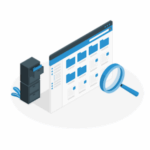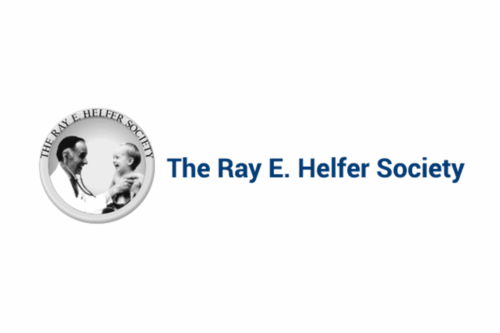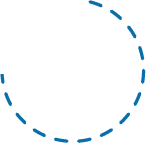Attracting new donors can be daunting for associations and nonprofits of all sizes. Yet, it’s vital for the sustainability of any organization.
This blog post will guide you through the fundamentals of donor acquisition, highlight effective strategies and offer best practices to help your nonprofit grow its donor base and retain those valuable supporters.
We’ll also explore how to calculate your donor acquisition rate, the cost of acquiring new donors and how MemberClicks can assist your nonprofit with these efforts. By the end of this guide, you’ll have a solid understanding of how to increase your donor base and sustain long-term growth.
What Is Donor Acquisition?
Donor acquisition is the process nonprofits use to attract and secure financial support from individuals who have never donated. It involves identifying potential donors, reaching out to them through various channels and converting them into active supporters.
With the right donor acquisition strategies, nonprofits can consistently bring in new supporters and build a stronger donor pool.
Acquiring donors isn’t just about asking for money. It’s about fostering relationships — understanding your audience’s values and aligning them with your organization’s mission. Successful donor acquisition efforts hinge on connection, trust and demonstrating tangible outcomes that resonate with potential supporters.
How To Calculate Donor Acquisition Rate
Donor acquisition rate is a critical metric that helps nonprofits measure the effectiveness of their fundraising efforts. Here’s the formula:
Donor Acquisition Rate = (New Donors / Total Donors) × 100
This formula gives you a percentage reflecting the growth of your donor base over a given period. By tracking this regularly, nonprofits can evaluate the success of their efforts and make necessary adjustments to improve.
Regularly monitoring this metric helps assess campaign performance and provides insights into patterns over time, such as seasonal peaks in giving or periods of donor disengagement.
How To Calculate Donor Acquisition Cost
Equally important is calculating the cost of acquiring new donors. Donor acquisition cost refers to the amount of money your nonprofit spends to secure a new donor. Here’s how you can calculate it:
Donor Acquisition Cost = Total Marketing and Fundraising Costs / Number of New Donors Acquired
Understanding donor acquisition costs allows nonprofits to optimize their return on investment (ROI). If your acquisition costs are too high, refining your marketing strategy or exploring lower-cost channels might be time.
What Is the Average Donor Acquisition Rate for Nonprofits?
Donor acquisition rates vary across the sector, but the average tends to fall between 1.5% and 3% annually. Nonprofits that focus on building relationships and improving their outreach can achieve higher acquisition rates.
However, it’s important to balance acquisition efforts with donor retention strategies. Constantly focusing on bringing in new donors without working to retain them can be financially unsustainable.
How To Acquire the Right Donors for Your Nonprofit
Not all donors are the same; nonprofits must focus on acquiring the right ones. It’s about targeting individuals whose values align with your mission. A well-targeted donor base leads to more sustainable funding, stronger relationships and better retention.
Evaluate Your Current Donors
Before you focus on acquiring new donors, you should take a closer look at your existing supporters. Who are they? What motivates them to donate? By analyzing your current donor base’s demographics, interests and giving patterns, you can better understand who is more likely to support your cause.
This information will help you develop donor personas, serving as a foundation for targeting potential new donors. You can identify shared characteristics, such as age, geographic location or specific interests, to help refine your acquisition strategy.
Determine the Type of Donor Persona to Acquire
Once you have evaluated your current donors, you can create detailed donor personas. These personas represent ideal supporters, taking into account factors like income level, motivations, interests and communication preferences.
Donor personas allow you to create tailored marketing messages that speak directly to the values and desires of your target audience. For instance, a donor who is passionate about environmental causes might respond more favorably to campaigns focused on sustainability.
At the same time, someone invested in education would be more interested in how their donation supports learning initiatives.
Craft Your Marketing Messaging
Your messaging plays a crucial role in donor acquisition. Potential donors want to know that their contributions will have a meaningful impact, so it’s essential to communicate clearly and concisely how their support makes a difference. Focus on telling stories highlighting the tangible outcomes of your nonprofit’s work.
Additionally, your messaging should be consistent across all channels. Whether it’s a direct mail campaign, social media post or email outreach, your message should resonate with your audience and reinforce your nonprofit’s mission.
The Top Donor Acquisition Strategies
There are many donor acquisition strategies nonprofits can use to reach potential donors. Here are some of the most effective methods:
Leverage Existing Supporters
Your current donors can be powerful advocates for your cause. Encourage them to share your campaigns with their network, bring friends to events or promote your organization on social media. Referrals from trusted sources are often the most persuasive form of outreach, as people are more likely to donate when they hear about your nonprofit from someone they know.
Create campaigns that make it easy for existing donors to spread the word. This could involve creating social media shareables or referral incentives for donors who bring in new supporters.
Share Impact Stories
Potential donors want to know their money is making a difference. Sharing stories about the people or communities your nonprofit has helped can be a powerful motivator. Highlight specific examples of how donations have directly contributed to positive change.
These impact stories can be shared across multiple platforms, including your website, social media, email newsletters and printed materials. The more places you share these stories, the wider the reach and the greater the emotional connection you’ll build with your audience.
Host FUNdraising Events
Events that offer a fun experience and support for a good cause can attract potential donors who may not have engaged with your nonprofit otherwise. Whether a gala, charity auction or community fair, your events should be enjoyable, interactive and clearly aligned with your mission.
Make sure that attendees know how they can contribute during and after the event. Offer easy ways to donate through text-to-give options, on-site donation stations or post-event follow-up emails.
Embrace Multichannel Marketing
Successful donor acquisition often involves reaching potential donors through multiple touchpoints. By diversifying your marketing efforts, you can engage donors where they are most active. Some key channels to consider include:
- Email: Sending personalized emails is an effective way to nurture relationships with potential donors. Use email to share updates, stories and ways in which they can contribute. Keep emails concise, engaging and action-oriented. Adding a clear call to action, like a donation button, helps drive conversions.
- Social media: Platforms like Facebook, Instagram and LinkedIn are ideal for reaching a broad audience. Regularly post about your cause, upcoming events and success stories to keep your nonprofit top-of-mind. Engaging with followers in the comments and using live video to share updates can deepen the connection with your community.
- Direct mail: Even today, direct mail remains a powerful tool for nonprofits. Well-written letters, personalized to the recipient, can evoke emotion and lead to higher donation rates. Make sure your mailing includes a clear call to action and instructions for how they can contribute.
- Phone calls: Personalized phone calls from your team or volunteers can make potential donors feel valued and more likely to contribute. Use these calls to explain your mission, how their support will make an impact and why now is the time to give.
- Website: Your nonprofit’s website should make donating easy for visitors. Ensure the donation button is prominent and includes clear calls to action throughout your website. Make sure your site is mobile-friendly and provides a seamless experience for visitors on any device.
- Paid advertising: Paid search and social media ads can help you reach potential donors who may not be familiar with your organization. Target your ads based on your donor personas to maximize results. Experiment with different types of ads, such as video or carousel ads, to capture attention.
Donor Acquisition Best Practices to Implement
Now that you’re familiar with practical strategies, here are some best practices to keep in mind as you implement your donor acquisition plan:
Set SMART Goals
Setting Specific, Measurable, Achievable, Relevant and Time-bound (SMART) goals for your donor acquisition efforts will help you stay on track and measure success. For example, you might set a goal to increase your donor acquisition rate by 5% over the next six months.
SMART goals give your team clarity and provide a framework for tracking progress so that every step of the process contributes to your overall mission.
Consistently Measure and Evaluate Your Strategy
Regularly reviewing your donor acquisition strategies is key to long-term success. Use fundraising metrics to evaluate how well your efforts are working and make adjustments as needed. Tools like donor databases can help track progress and identify areas for improvement.
Use Strategies To Retain Your Donors
Acquiring new donors is only half the battle — retaining them is equally important. Implement strategies to engage and retain donors once they make their first contribution. Personal thank-you letters, updates on how their donation is being used and ongoing engagement are just a few ways to keep donors involved.
Utilize Software To Optimize
Leveraging software like MemberClicks can streamline your donor acquisition efforts. With MemberClicks’ tools, you can manage contacts, track donations and automate emails to maintain consistent communication with donors. allowing your nonprofit to see how it can optimize your donor acquisition process.
Your Nonprofit’s Path to More Donors
Donor acquisition is an ongoing process that requires dedication, strategy and adaptability. By implementing the methods outlined in this guide, your nonprofit can improve its donor acquisition rate, lower acquisition costs and foster stronger relationships with potential supporters. Remember to measure your efforts regularly, set clear goals and continually refine your approach.
With the right donor acquisition strategies in place, your nonprofit will be well on its way to growing its supporter base and achieving its mission.
Grab a demo of MemberClicks’ nonprofit management software and see how our purpose-built software can help grow you donor acquisition strategy today!
















